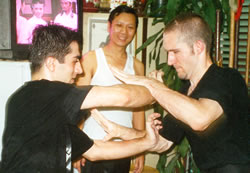Hey Everybody,
I was curious about the similarities and differences between Southern Chinese Martial Arts as it relates to bridging and their theories about it.
For example, one art might only bridge when necessary (not needing a connection), other arts may seek to bridge & make contact with an opponent before/during a strike regardless.
Specifically I would like to talk about the similarities/differences and theories as it relates to Bak Mei, Southern Mantis, Fukien White Crane, Wing Chun, Southern Dragon, etc.
Thanks!



 Reply With Quote
Reply With Quote









